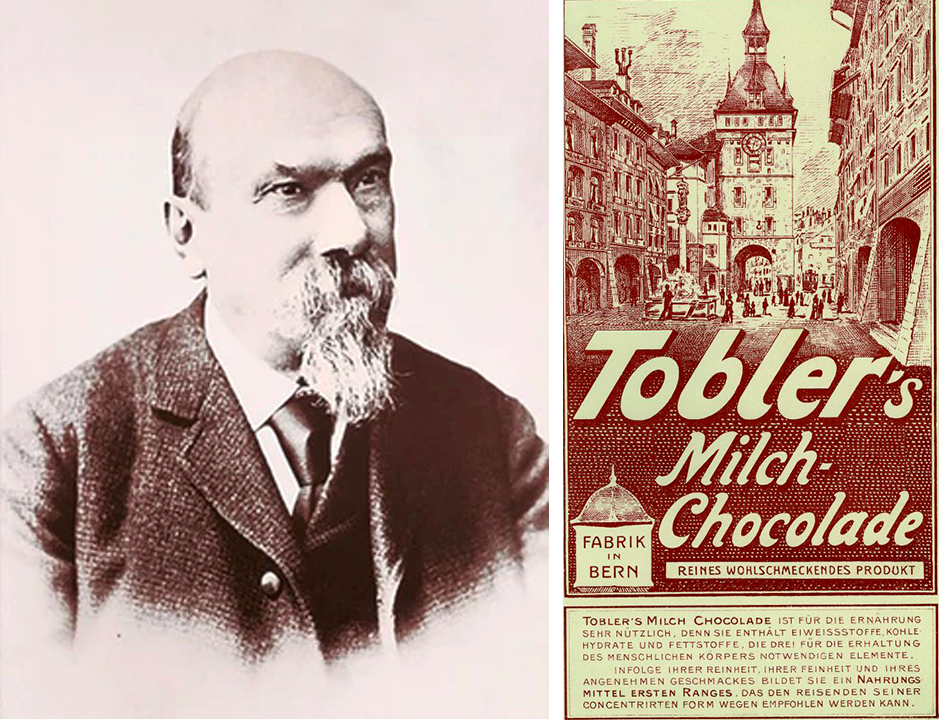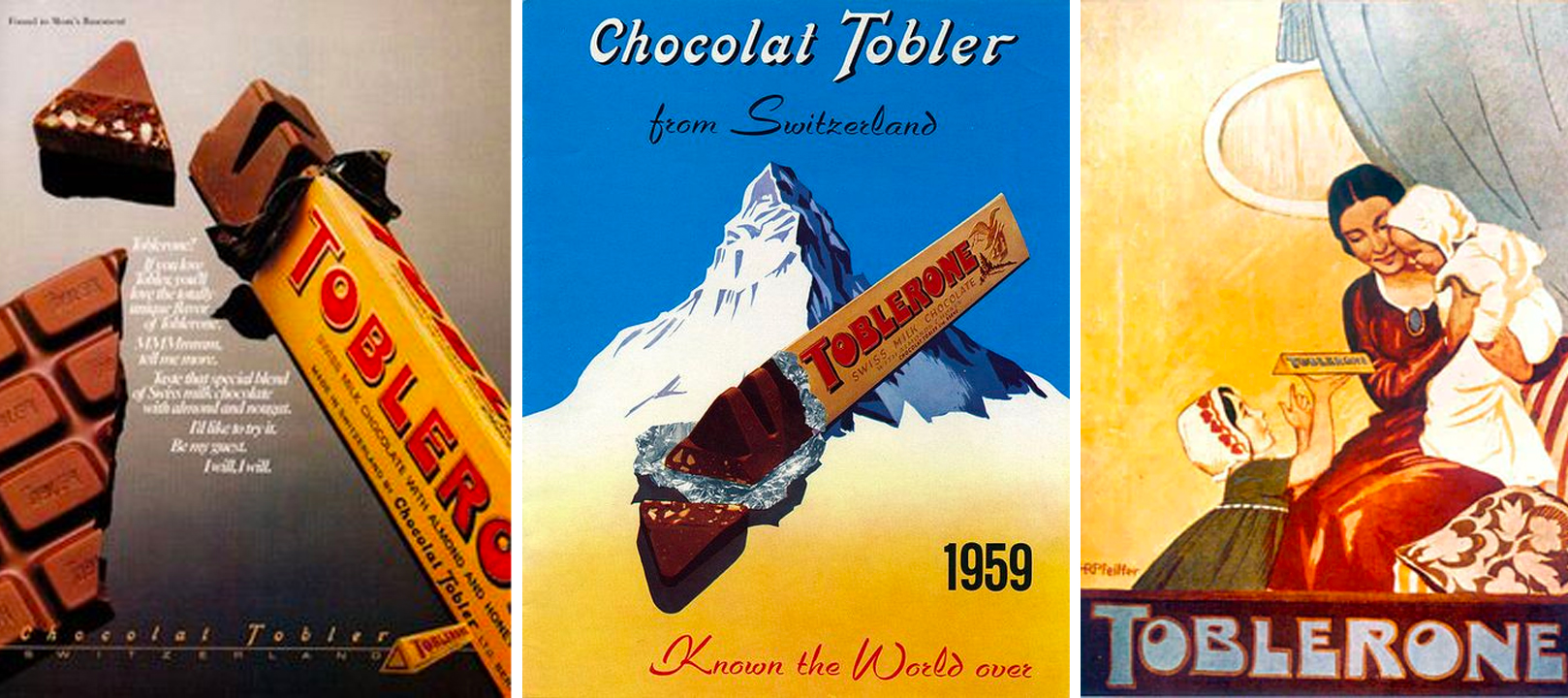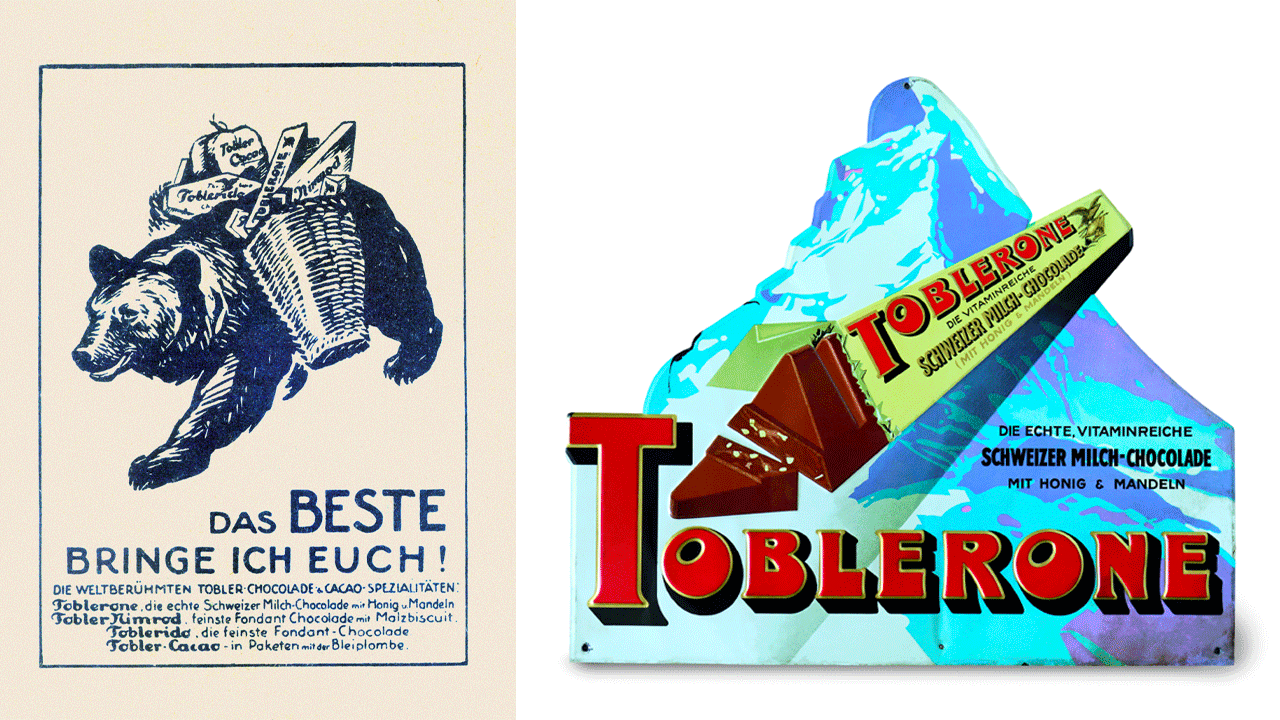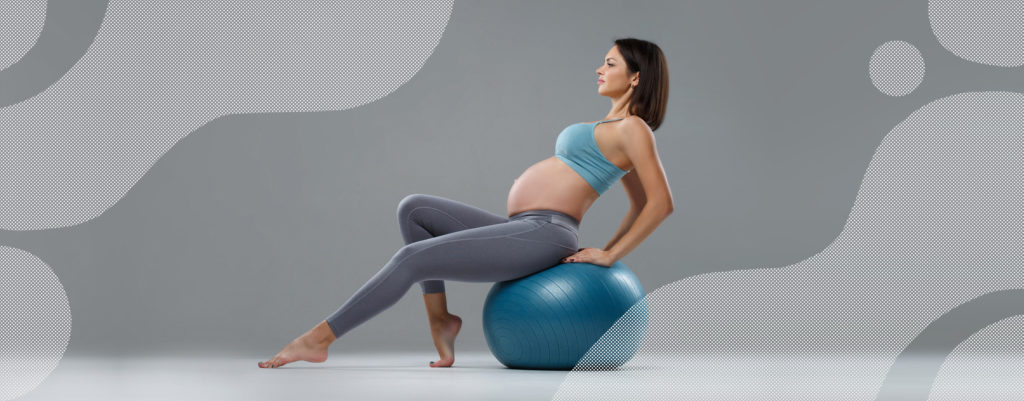Although Toblerone is indelibly anchored in Swissness, neither its name nor its idea is entirely Swiss. Indeed, its name is half Italian, while its secret ingredient was brought directly from France. We wanted to shed light on a secret that has been well kept for 155 years.
In 1867, a certain Jean Tobler started working at Kuentz, a pastry shop on the Bernese Marktgasse. His beginnings were promising, but the owner of the shop soon fell ill. Jean decided to take over the establishment. If this decision seems very ambitious, the next steps will be even more so! Instead of continuing to run the business, he decided to move to a new building in Mittelstrasse and renamed it Confiserie Spéciale.
The chocolates were made from raw materials purchased from other manufacturers. We are not really into avant-garde production, but the demand is growing! Business was so good that the Bernese decided to launch his own chocolate factory under the name Fabrique de Chocolat Berne, Tobler & Cie.
It was the beginning of a new family adventure, but not yet the one of the emblematic cones.

Between white and brown
Ten long years will pass before the discovery that will give a new direction to this small business, undeniably changing the chocolate world. It will be made by the new generation of the company and another Tobler, Theodor, son of Jean.
At that time, Emil Baumann, Theodor’s cousin and head of production in the family business, brings back a strange product from his trip to Metz. White nougat, which he discovered on the spot! You have to taste it!
And he is right, sweet and crunchy, the delicacy immediately seduces Theodor.
And why not integrate this white paste in the chocolate? But what an idea to mix two desserts! After tests in the family kitchen, the ideal proportions between beans, milk, sugar, honey, egg white and almonds were perfected. It was time to commercialize. So in 1908, this innovative marriage was produced under the name of Toblerone.
Finally, the recipe is quite simple, but paradoxically will never be equaled, a bit like Nutella, obvious ingredients, inimitable mixture. But that’s another story, let’s go back to Switzerland. Besides, the name Toblerone is an ingenious association of what made the success of the product: the family name Tobler and the ingredient torrone, Italian name for honey and almond nougat.
Thus began the more than one hundred year old adventure of the first chocolate bar in history!
The ascent of the Matterhorn
Before continuing the story, it remains to determine the origins of this particular shape that has become so emblematic. Paradoxically, the truth does not exist, but there are two main theories.
According to the first, the pyramidal shape recalls the Swiss landscape and in particular the Matterhorn peak, culminating at 4,478 meters. If today this interpretation seems obvious, at the time of creation the reflection of the mountain did not yet decorate the packaging, so no comparison is possible.
Moreover, there is no bear either, but an eagle. But we will come back to this.
The second theory, more intriguing, refers to a show at the Parisian music hall Folies Bergère, which culminated with a human pyramid, which would have strongly marked the confectioner.
So it’s up to you to decide. What is certain is that this shape, which has even been patented, will contribute greatly to the international recognition of the brand!

Toblerone without Tobler
A self-made man, Theodor Tobler transformed his parents’ small confectionery into a major employer in Bern. By 1920, some 2,000 people were working for the small pyramids.
It was also at this time that the company decided to further anchor itself in its Bernese origins, replacing the eagle with the city’s heraldic animal, the bear. But following the lines of the pyramid, after this peak of success and recognition, the business sinks into the trough.
Finally, the crisis of the 1930s gets the better of Theodor Tobler, who puts the company into debt, before being replaced by a decision of the Board of Directors. Although his career came to an abrupt end, the orphan Toblerone had to continue his evolution, moving from one company to another. First associated with Suchard in the 1970s, the group was finally acquired by the Swiss-German industrialist Klaus Jacobs.
The new Jacobs Suchard was then bought by the American Philip Morris. Today, Toblerone operates alongside LU, Milka, Oreo and Côte d’or within Modelez, a food multinational managed by the Philip Morris group.

The chocolate saw teeth
If the House remained almost unchanged at the beginning of its history, all the innovations are rather concentrated in the last 50 years. Sometimes they propelled the brand to the peak of its pyramid, sometimes, on the contrary, it was a free fall into the valley.
Although the company began to introduce new variations of the classic bar in 1969, it was extremely careful not to diversify its range too much. Thus, the first innovation is the dark chocolate, followed by the white, the filled in its blue packaging, the praline in 1997 and finally the Fruit & Nut, ten years later. And that’s not to mention the mini versions, of course!
If the ingredients and the colors of the packaging change, the format of the pyramid bar remains ancestral… well almost.
Let’s talk about a flop, probably the most important in the history of the brand. In 2016, following the events of Brexit, the company decided to reduce its costs and reduced the weight of bars sold in the UK by 10%.
As it does not want to touch the historical length, the decision is to space the pyramids. The result? Toblerone is compared to a bike park, rather than a mountain range.
Anyway, the #Tobleronegate has been used so often that the brand is backtracking on its decision. Speaking of mountains. The Matterhorn appeared on packaging in the 1970s, while the famous bear in negative space returned in the 2000s. The two symbols are thus combined, while the letters BERNE (toBlERoNE) are highlighted, once again recalling the origin of the bar.
Currently, the annual production of some 7 billion triangles (one piece for each inhabitant of the planet!) leaves the factory west of Berne, largely for export. And yes, 97% of the bars go to the four corners of the world.
But a decision was recently announced: like brands like Milka and Suchard, part of the production will be moved to Bratislava in 2023. Thus, the bear will come down from its native Matterhorn to the High Tatras! The Made in Switzerland label will probably be withdrawn.

If Toblerone has entered the Guinness records with its 7 kilograms bar, it has also become a reference of form, especially in national protection. Thus, the defense lines made of concrete spikes that are emerging from the ground proudly bear the name of the famous chocolate maker, while preventing an invasion with tanks. Who would have thought it?
